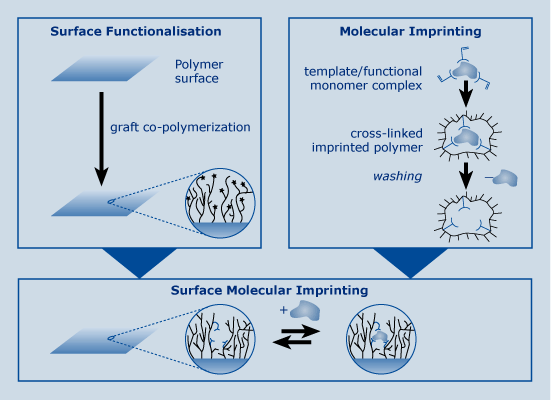Molecular Imprinting of Surfaces (MSI)
The method of molecular imprinting has become a highly attractive field of research. Above all, it convinces by the elegant simplicity of its concept. Molecular Surface Imprinting allows the synthesis of integrated polymers with fitting binding sites for specific target molecules, without complex partial steps for construction of these “molecular imprints” in the host structure (matrix) being necessary, as it is the case in conventional organic synthesis. The target structure (template) is complexed in a solution with monomers which have functional groups, with which the template bonds covalently or non-covalently. In the course of this a specific, three-dimensional formation of the functional monomers given by the template is created. In the next step, this complex is stabilized by polymerization with a cross linker. After separation of the template, fitting imprints of the target molecule are available in the matrix.
By molecular surface imprinting porous surfaces are provided with molecular imprinted polymers (MIPs). Thus the large specific surface and the permeability of the substrates can be used to decisively increase static as well as dynamic capacity of the imprinted polymer. Thus the advantages of both porous substrates and molecular imprinting are combined.
MSI enables the production of custom-made surfaces for identification of a wide range of target structures with limited resources. Surfaces created by MSI are used for example in solid phase extraction (SPE), separation of enantiomers, sensors, catalysis, in the development and the transport of active substances.

